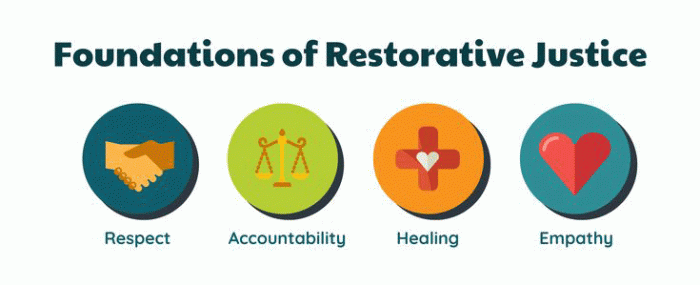
4 Classroom Challenges That Strengthen Classroom Community
4 Classroom Challenges That Strengthen Classroom Community – Building a strong classroom community is crucial for student success and well-being. It goes beyond academics, fostering a sense of belonging, collaboration, and mutual respect. While creating this kind of environment might seem challenging, incorporating specific activities can cultivate a positive and supportive atmosphere.
Let’s explore four engaging classroom challenges that can strengthen classroom community and empower students to thrive.
These challenges are not merely exercises but opportunities for students to learn valuable skills, build relationships, and develop a shared sense of purpose. By encouraging teamwork, active listening, and shared responsibility, we can transform classrooms into dynamic learning environments where every student feels valued and connected.
Collaborative Projects: 4 Classroom Challenges That Strengthen Classroom Community

Collaborative projects are a powerful tool for fostering communication and teamwork within the classroom. By working together on shared goals, students learn to share ideas, support each other, and build upon each other’s strengths.
Examples of Collaborative Projects
Collaborative projects provide opportunities for students to learn from each other and develop essential skills. Here are some examples of projects that encourage collaboration:
- Creating a class newspaper or magazine:Students can work in teams to research, write, and edit articles on various topics, including school events, current affairs, and student life. This project encourages students to communicate effectively, share ideas, and contribute to a common goal.
- Developing a multimedia presentation on a historical event or scientific concept:Students can collaborate to research, design, and present information using various media formats like videos, infographics, and interactive elements. This project promotes teamwork, creativity, and the ability to present complex information in engaging ways.
- Building a model or prototype:Students can work together to design, construct, and test a physical model or prototype based on a specific problem or challenge. This project encourages students to apply their knowledge, problem-solve collaboratively, and learn from each other’s perspectives.
Importance of Clear Roles and Responsibilities
Clearly defined roles and responsibilities are crucial for successful collaborative projects. This ensures that everyone understands their contribution and responsibilities, preventing confusion and promoting efficient teamwork.
Four classroom challenges that strengthen classroom community are: cooperative learning activities, student-led discussions, service learning projects, and peer mentoring. These challenges foster collaboration, critical thinking, and a sense of shared responsibility. Similar to the recent bipartisan legislation announced by senators to help veterans exposed to burn pits , these classroom challenges aim to address a need and create a positive impact.
By creating opportunities for students to work together and support one another, we can build a strong and supportive classroom community.
- Project Manager:The project manager oversees the overall project, sets deadlines, delegates tasks, and ensures everyone is on track.
- Research Team:This team focuses on gathering information, conducting research, and analyzing data relevant to the project.
- Design Team:The design team is responsible for creating visual elements, presentations, and other materials for the project.
- Implementation Team:This team takes the project plan and puts it into action, ensuring the project is completed successfully.
Designing a Collaborative Project
To design a collaborative project that addresses a real-world problem, consider the following steps:
- Identify a relevant problem:Choose a problem that is meaningful to students and has real-world implications. This could be a local environmental issue, a social injustice, or a technological challenge.
- Break down the problem into manageable tasks:Divide the problem into smaller, more manageable tasks that students can work on collaboratively. This makes the project less overwhelming and allows for more focused contributions.
- Establish clear roles and responsibilities:Define specific roles and responsibilities for each team member, ensuring everyone understands their contribution and how it fits into the overall project.
- Provide resources and support:Provide students with the necessary resources, tools, and guidance to complete the project successfully. This could include access to online databases, research materials, or expert advice.
- Encourage communication and collaboration:Foster an environment of open communication and collaboration, where students feel comfortable sharing ideas, asking questions, and supporting each other.
- Assess the project’s impact:Once the project is completed, evaluate its impact and assess the learning outcomes for students. This could involve analyzing the project’s results, reflecting on the collaborative process, and identifying areas for improvement.
Real-World Problem: Reducing Food Waste, 4 classroom challenges that strengthen classroom community
A collaborative project could focus on reducing food waste in the school cafeteria. Students could work in teams to:
- Research the problem:Investigate the causes of food waste in the cafeteria, such as portion sizes, menu options, and student behavior.
- Develop solutions:Brainstorm and propose solutions to reduce food waste, such as implementing a composting program, offering smaller portion sizes, or promoting educational campaigns about food waste.
- Implement and evaluate solutions:Work with cafeteria staff to implement the chosen solutions and collect data to evaluate their effectiveness.
- Present findings:Share their findings and recommendations with the school community, advocating for sustainable practices and reducing food waste.
Shared Responsibility and Classroom Management
A classroom where students feel a sense of ownership and responsibility for their learning environment fosters a more positive and productive atmosphere. This shared responsibility can be achieved through well-defined routines, clear expectations, and active student involvement in classroom management.
Establishing Classroom Routines and Expectations
Clear and consistent routines contribute significantly to a sense of shared responsibility in the classroom. By establishing predictable patterns for daily activities, students learn to anticipate what is expected of them, allowing them to focus their energy on learning. These routines also empower students to take ownership of their actions and contribute to a smooth flow of classroom activities.
Building a strong classroom community takes effort, and sometimes, that means embracing challenges. From collaborative projects that force students to work together to resolving conflicts peacefully, these hurdles can foster empathy and understanding. Even when we step outside the classroom, lessons in integrity and accountability arise, like the recent news of a retired general investigated over undisclosed lobbying for Qatar.
These real-world examples offer valuable teachable moments, reminding us that ethical behavior and transparency are crucial both in the classroom and beyond.
For example, a clear routine for entering the classroom, transitioning between activities, and collecting materials promotes a sense of order and predictability, minimizing disruptions and maximizing learning time.
Creating a strong classroom community requires tackling tough issues head-on, like navigating differences in opinions, fostering empathy, and building respect. These challenges, though difficult, are essential for creating a safe and inclusive environment. Sadly, the recent incident where a possible noose was found near a CIA facility, as reported in this article , serves as a stark reminder of the importance of addressing these issues in all facets of society.
By confronting these challenges in the classroom, we can help students develop the skills and understanding needed to build a better world.
Building Inclusive Classroom Culture
A classroom where every student feels welcomed, valued, and respected is the foundation for a successful learning environment. Building an inclusive classroom culture involves actively promoting diversity, celebrating individual differences, and creating a space where everyone feels comfortable being themselves.
Strategies for Fostering Inclusivity
Creating an inclusive classroom culture requires a conscious effort to promote diversity and respect individual differences. Here are some effective strategies:
- Establish Clear Expectations:Clearly communicate to students the importance of respecting others, regardless of their differences. This includes setting ground rules for behavior and interactions, emphasizing empathy and understanding.
- Model Inclusive Behavior:As a teacher, you are a role model for your students. Demonstrate respect for all students by using inclusive language, acknowledging their perspectives, and treating everyone with fairness and dignity. This sets the tone for the entire classroom.
- Celebrate Diversity:Encourage students to share their unique backgrounds, cultures, and experiences. This can be done through class discussions, presentations, and projects that showcase the richness of diversity within the classroom.
- Integrate Diverse Perspectives:Incorporate diverse voices and perspectives into your curriculum. This can involve using materials that represent different cultures, ethnicities, genders, and abilities. It’s also important to include a variety of perspectives in discussions and group activities.
- Address Bias and Stereotypes:Actively challenge bias and stereotypes when they arise. This may involve having open conversations about sensitive topics, providing accurate information, and encouraging students to think critically about their own assumptions and biases.
Classroom Activities for Promoting Empathy and Respect
Engaging students in activities that promote empathy, understanding, and respect for all is essential for building an inclusive classroom culture. Here are some examples:
- Empathy Exercises:Use role-playing or storytelling activities to help students understand different perspectives. For example, students can role-play scenarios where they have to understand the feelings and needs of someone with a different background or experience.
- Diversity Awareness Projects:Encourage students to research and present information about different cultures, religions, or historical events. This can help students learn about the richness of diversity and appreciate the contributions of various groups.
- Collaborative Group Projects:Assign group projects that require students to work together and rely on each other’s strengths. This promotes teamwork, communication, and respect for individual contributions.
- “Day in the Life” Activities:Have students write or create presentations about a day in the life of someone with a different background or ability. This can help them understand the challenges and opportunities that others face.
- Community Service Projects:Involve students in community service projects that benefit diverse populations. This provides opportunities for students to learn about different communities and make a positive impact.
Creating a Safe and Welcoming Space
A safe and welcoming classroom environment is essential for fostering inclusivity. Students should feel comfortable expressing themselves, asking questions, and taking risks without fear of judgment or ridicule.
- Establish Clear Boundaries:Communicate clear expectations for respectful behavior and interactions. This includes setting rules against bullying, discrimination, and harassment.
- Foster Open Communication:Encourage students to share their concerns and ideas. Create a space where students feel comfortable expressing themselves without fear of judgment.
- Listen Actively:Pay attention to what students say and how they express themselves. Be responsive to their needs and concerns.
- Celebrate Successes:Recognize and acknowledge the accomplishments of all students, regardless of their background or abilities. This helps create a positive and supportive environment.
- Provide Support:Offer individual and group support to students who are struggling or facing challenges. This can include providing extra help, connecting them with resources, or simply offering a listening ear.
Addressing Bullying and Discrimination
Bullying and discrimination can have a devastating impact on students’ sense of belonging and well-being. It’s crucial to address these issues proactively and constructively.
- Develop a Clear Anti-Bullying Policy:Create a written policy that Artikels the school’s stance on bullying and discrimination. This policy should clearly define what constitutes bullying, the consequences for engaging in such behavior, and the procedures for reporting incidents.
- Promote Bystander Intervention:Encourage students to speak up when they witness bullying or discrimination. Explain the importance of intervening and how to do so safely and effectively.
- Provide Training:Offer training to students and staff on how to recognize and respond to bullying and discrimination. This training should cover topics such as identifying different forms of bullying, understanding the impact of bullying, and developing strategies for prevention and intervention.
- Create a Culture of Respect:Foster a school culture where everyone feels valued and respected. This involves promoting empathy, understanding, and tolerance for all students.
- Involve Parents and Families:Collaborate with parents and families to address bullying and discrimination. Share information about the school’s anti-bullying policy and encourage them to talk to their children about the importance of respectful behavior.
Final Thoughts
By embracing these four challenges, we can create a classroom where students are not just learners but active participants in their own education and the well-being of their community. The rewards of a strong classroom community are immeasurable, fostering a positive learning environment where students feel empowered to reach their full potential.
Remember, building a strong classroom community is an ongoing journey, and each challenge offers a unique opportunity to cultivate a more inclusive and supportive space for all.



